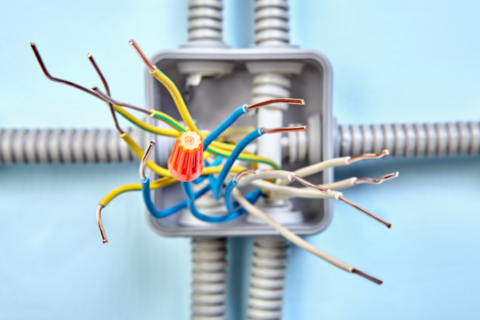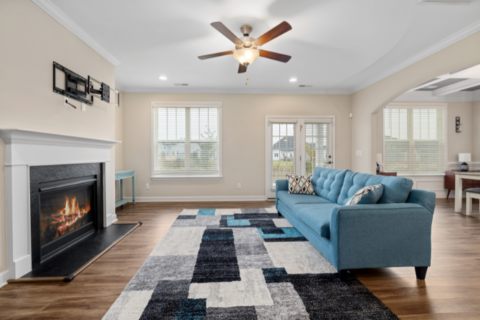Safe and Efficient Backup Power with Generator Wiring
Wiring Generator Transfer Switch
Are you tired of being left in the dark during power outages or struggling to keep your essentials running with a portable generator? As a homeowner in the zip code 02909 Providence, Rhode Island, it’s important to have a reliable and efficient backup plan for times when the power goes out. Not only can outages be inconvenient, but they can also pose safety hazards, particularly during severe weather conditions. That’s where a generator transfer switch comes in.
At B&K Electric, a family-owned and operated electrical business based in Warwick, RI, we understand the importance of safe and efficient backup power for your home. With over seventeen years of experience, our electricians have been proudly serving the residents of Cranston, Warwick, and all of Rhode Island. Our expertise lies in providing top-notch electrical repair, panel maintenance, and installation services. So, whether you’re a homeowner in the Warwick area or the greater Providence area, make us your go-to electrician for all your electrical needs.
In this article, we will dive into the world of generator transfer switches – what they are, how they work, and why they are crucial for every homeowner’s backup power plan. As a homeowner, it’s essential to have a basic understanding of this integral component of your electrical system, as it can provide you with peace of mind during power outages and ensure the safety of your home and loved ones.
What is a Generator Transfer Switch?
In simple terms, a transfer switch is a device that allows you to safely and efficiently switch your home’s electrical load from the utility power grid to a backup power source, such as a generator. It essentially acts as a bridge between your home’s electrical system and your backup power source, providing a seamless transition during power outages.
There are two main types of transfer switches – manual and automatic. Manual transfer switches require you to physically switch the power source, while automatic transfer switches automatically detect power outages and switch to the backup power source. For the purpose of this article, we will be focusing on manual transfer switches, as they are more commonly used in residential settings.
Why Do You Need a Transfer Switch?
You may be wondering, why can’t I just plug my portable generator directly into the wall outlets to power my home during an outage? Well, here’s why – without a transfer switch, you risk backfeeding, which can be extremely dangerous and potentially deadly.
Backfeeding occurs when portable generators are plugged directly into outlets, bypassing the electrical panel and potentially sending electricity back into the grid. This can create a hazardous condition for utility workers attempting to restore power, as well as for your household appliances and electronics, which may get destroyed due to the voltage overload.
A transfer switch eliminates this risk by isolating your home’s electrical system from the utility grid, preventing any backfeeding and ensuring the safe use of your backup power source.
How Does a Transfer Switch Work?
A generator transfer switch is installed next to your home’s main electrical panel and is connected to both the utility grid and your generator. It has two main parts – the service disconnect and the generator disconnect.
The service disconnect is connected directly to your home’s main electrical panel and is responsible for disconnecting your home from the utility grid. The generator disconnect is connected to your generator and is responsible for switching the electrical load to your backup power source once the utility power is disconnected.
Once a power outage occurs, you simply flip the switch on the transfer switch from line to generator, and voila – your home is now powered by your backup generator. When the utility power is restored, you can safely switch the power back to the utility grid, and the transfer switch will once again connect your home to the grid.
Benefits of Having a Transfer Switch
Having a transfer switch installed in your home comes with numerous benefits, including:
1. Safety – As mentioned earlier, a transfer switch eliminates the risk of backfeeding, ensuring the safety of utility workers and preventing damage to your appliances and electronics.
2. Convenience – With a transfer switch, you don’t have to worry about manually plugging your generator into different outlets or extension cords to power different parts of your home. It provides a centralized and efficient solution for powering your home during outages.
3. Time-saving – During power outages, every minute counts, and having a transfer switch installed can save you time and effort in switching between power sources.
4. Protection for your generator – By using a transfer switch, you can avoid damaging your generator from overload, as it will be powering only those appliances and electronics that are connected to it through the transfer switch.
The essence
Having a reliable backup power plan is crucial for every homeowner. A generator transfer switch is an essential component of this plan, as it provides a safe and efficient way to power your home during outages. If you’re a homeowner in the zip code 02909 Providence, Rhode Island, make sure to contact B&K Electric for all your electrical needs. Our team of licensed electricians will ensure that your transfer switch is installed correctly and meets all safety standards. Stay prepared and keep your home running smoothly with a generator transfer switch from B&K Electric.
Topics:


